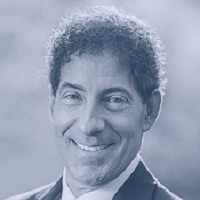Most democratic nations on earth elect their presidents by direct popular vote, but that was never the American system and still is not. We use the so-called “Electoral College” system to choose our president, which today means that 538 Electors drawn from the states and the District of Columbia speak for the rest of us. This is a complex and non-uniform state-based process, designed—like the U.S. Senate, which was originally composed of Members chosen by state legislatures, not the people—to filter public opinion through a “deliberative” intermediate institution. But the Electoral College has produced recurring political controversy over the centuries and also experienced significant constitutional, legislative, and political upheaval and revision. Today few people would consider the Electoral College to be a “deliberative” body as it was once imagined because the Electors are appointed mechanistically to winners according to vote totals in the states. Although the Electors meet in their state capitals at a December date set by Congress to cast their ballots, in practice they simply follow the election returns and never conduct substantive discussion or debate about who should be president. Still, the Electors do possess the legal prerogative to vote as they wish, and under extraordinary circumstances they might exercise that prerogative to change the expected outcome dictated by popular election returns.
The colloquially-named Electoral College arises from Article II, Section 1, Clauses 2 and 3, which state that:
"Each State shall appoint, in such Manner as the Legislature thereof may direct, a Number of Electors, equal to the whole Number of Senators and Representatives to which the State may be entitled in the Congress; but no Senator or Representative, or person holding an Office of Trust or Profit under the United States shall be appointed an Elector.
The Congress may determine the Time of chusing the Electors, and the Day on which they shall give their Votes; which Day shall be the same throughout the United States."
Under the further original provisions of Article II, Electors cast ballots not for one candidate for president but for two, with the second-place finisher becoming vice-president. No one originally expected that there would be national parties that nominated candidates and slated a ticket for president and vice-president. The strange two-vote feature nevertheless led almost immediately to a serious political crisis in the election of 1800 when Democratic-Republican Thomas Jefferson defeated Federalist John Adams 73-65 in the Electoral College but then tied his own nominal running mate, Aaron Burr, 73-73. The mischievous Burr refused to stand down in the face of this embarrassing constitutional glitch, thus throwing the process into the U.S. House of Representatives under the so-called “contingent election” procedures in which each state’s U.S. House of Representatives delegation casts a single vote for president and the winner of the majority becomes president. The resulting contingent election in the House became a nightmare of its own when the lame-duck Federalist-controlled Congress took an exhausting six days and 36 ballots to choose Jefferson, who the Federalists ultimately considered the lesser of two evils.
The most glaring early bugs in the system—the real possibility of ties, the fact that the president and vice-president could represent different political parties as had happened when Adams and Jefferson served together in 1796—were ironed out by the Twelfth Amendment in 1804. But our unique Electoral College system has continued to shape the country’s politics in fundamental ways that both supporters and critics would agree depart from democratic norms.
Under Article II, the states are allotted a number of Electors equal to their Congressional delegation, which is the number of Representatives plus two for the Senators, but the actual Electors are appointed according to rules set exclusively by the state legislatures themselves. Today, 48 states appoint all of their Electors on a “winner take all” basis from slates provided by the top vote-getter in their statewide popular election for president. But two states—Maine and Nebraska—award the Electors by Congressional District and give their remaining two electoral votes to the statewide winner. Historically, there has been an even more dizzying variety in the systems developed in each state. In the first presidential election, five state legislatures—in Connecticut, Delaware, Georgia, New Jersey, and South Carolina—themselves simply designated presidential Electors without having any popular election at all. In four states, the voters elected all of the Electors. In Virginia, which had ten congressional districts, the General Assembly divided the Commonwealth into twelve presidential districts and conducted a popular election. In subsequent elections, there have been statewide elections, elections of Electors from single-member districts that mirror Congressional districts, elections of Electors from specially designed multi-member districts, elections in which only the Electors’ names appear on the ballot but not the names of the presidential candidates, elections in which the presidential candidates’ names appear on the ballot but not the names of the Electors, and even elections where the state legislatures have chosen not to appoint any Electors.
All of these variations are allowable under the constitutional design. As the Supreme Court wrote in McPherson v. Blacker (1892), which rejected a constitutional challenge to a Michigan law providing for selection of Electors by a district system, “the appointment and mode of appointment of Electors belong exclusively to the states under the constitution of the United States.” We have no uniform national system for appointing Electors, which means the legislatures do not have to consult the public at all. When members of the Florida legislature in 2000 threatened to abandon the results of the statewide popular contest and appoint Electors for a particular candidate, the Supreme Court in Bush v. Gore (2000) appeared to endorse their power to do so by denying that citizens have a constitutional right to vote in presidential elections. As the majority put it, “The individual citizen has no federal constitutional right to vote for Electors for the President of the United States. . .” When it comes to presidential elections, the voters are at the mercy of the state legislatures.
Although this lack of procedural uniformity has not proven especially controversial, this fact has: the Electoral College has periodically produced winners who clearly lost the national popular vote to an opponent. In at least five presidential elections—1824, 1876, 1888, 2000, and 2016—the presidential candidate who prevailed in the popular vote lost in the Electoral College. For example, in the disputed election of 2000, Vice President Al Gore received over 500,000 more votes than Governor George W. Bush did nationally, but lost to Bush in the Electoral College by a vote of 266 to 271, after the Supreme Court intervened, on equal protection claims, to halt a Florida Supreme Court order to recount ballots in some counties. Many people believe that the ability to carry the whole election by capturing this or that state—in our time it has been Florida and Ohio—increases the likelihood of strategic mischief and corruption in the electoral process.
Supporters of the Electoral College credit it with preserving an important dimension of state-based federalism in our presidential elections and argue that it works to guarantee that our Presidents will have nationwide support. Critics argue under current circumstances that it actually consigns most states in the Union to “spectator” status in presidential elections and drags down voter turnout in these states, reduces the real field of play to fewer than a dozen “swing states,” and dramatically polarizes the nation’s politics while reducing voter turnout. Proposed constitutional amendments for different plans for a direct popular election—some with a run-off provision in the event no candidate receives 40 percent in the first round—have to date made little headway.
A recent and unusual plan to work around the amendment process and address the problems of the Electoral College is the National Popular Vote Plan, which began in Maryland in 2007 and has since won support from a dozen other states. The idea is to form an interstate agreement for states to appoint their Electors for the winner of the national popular vote rather than the winner in each state. Champions of this plan assert that it would guarantee that there would be no more “wrong winners” and that every part of the Union would attract political investment and campaigning by the parties which today quickly abandon large parts of the country to their opponents while taking many other states for granted. Opponents say that the National Popular Vote plan actually defeats the state-based design of the Electoral College, could never be enforced if a state reneged on its promise, and is unconstitutional. Given the continuing polarization of American politics and background unhappiness with the Electoral College, it seems certain that the National Popular Vote plan and other reform proposals will continue to attract public attention and debate.





